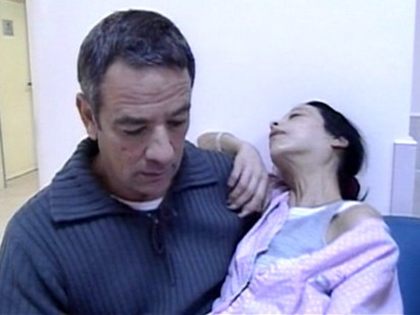Tags
Related Posts
Share This
Did Model Die From Pressure to Be Thin?

When Israeli fashion model Hila Elmalich died last month after years of fighting anorexia, she weighed less than 60 pounds. Her death sent a shockwave through Israel’s fashion world.
Elmalich, who had been in and out of hospitals for several years, collapsed at home and died Wednesday of heart failure.
The Israeli fashion photographer and modeling agent Adi Barkan was her friend. He spent hours at her bedside over the years. “I don’t know how to feel, I don’t know what to say,” he told ABC News Monday. “It’s still too fresh.”
For the last three years Barkan has been campaigning against the fashion industry’s use of super thin models. He now refuses to use models whose body mass index is less than 19. The BMI is an internationally recognized measure of a person’s weight in relation to their height.
Barkan led the charge against the pressure on models to be ultra-thin, and in 2004 Israel became the first nation to pass laws requiring modeling agencies to hire only healthy models who have a body mass index — a measure of body fat — of 19 or above. That means that a 5’9″ woman would have to weigh at least 129 pounds.
Barkan is convinced from his own experience working in the industry that young models are under intense pressure to lose weight. “In Israel we lost several sizes in 10 years!” he said, “when I was shooting fashion 10 years ago models were size 38, now it’s 32 or 34.”
Two years ago ABC News visited Adi at his studio in Haifa where he was working on a sporting catalogue. The three teenage models on the set were clearly in good health. He had just judged a national modeling competition and was shocked at the number of teenage girls who were under weight.He is also campaigning internationally to change attitudes in the fashion world. “They say a lot but they did nothing yet, so let’s do it! Because from talking nothing will move,” he told ABC News.
Over two years ago Elmalich was admitted to hospital. Adi rushed to her bedside, along with a film crew that caught the harrowing pictures of Hila collapsing into his arms, unable to support her own weight. “When she fell down, I felt the bones going into my legs, like a knife. When she fell down, I felt like I took hold of something from the grave,” he added.
This experience and Hila’s sudden death last week have shocked her old friend. But he is determined to carry on with his campaign. Adi Barkan hopes this tragedy will provide the necessary momentum to finally change attitudes in the fashion industry. The issue of skinny models flared up across the globe last year with several high-profile incidents.
In August, 22-year-old Uruguayan model Luisel Ramos died during Fashion Week in Montevideo after reportedly surviving on lettuce and diet drinks.
A few months later, it happened again. Twenty-one-year-old Brazilian model Ana Carolina Reston, who was 5’8″, was reported to have weighed just 88 pounds at the time — that’s a BMI of 13.5.
Spanish officials took action, requiring models to have a minimum BMI of 18 to participate in Madrid’s Fashion Week. Italy then ordered fashion officials to secure proof that the models they hire do not suffer from eating disorders.
In New York, the Council of Fashion Designers of America issued voluntary guidelines to raise awareness — urging designers to promote the message that beauty is health — but setting no minimum BMI requirement.
Officials in other key fashion capitals, London and Paris, did not act on the issue.
Designers say that clothes just look better on thin models and that the curves of more shapely models distract from the clothing they are showing off. They say rules and punishments would only stifle creativity.
Anorexia and bulimia, in particular, are complex diseases with physical, emotional and social roots. But a study by the British Medical Association confirmed the link between the images of “abnormally thin” models on TV and in magazines and the rise in anorexia and bulimia.
According to the Academy for Eating Disorders, 10 percent or more of late adolescent and adult women report symptoms of eating disorders at any one time. The AED says those who have such a powerful influence on the perception of beauty must take more responsibility.







